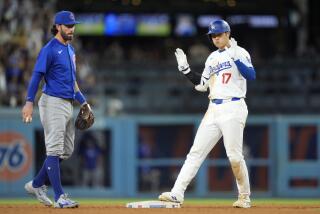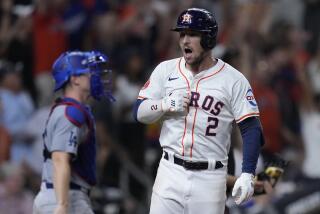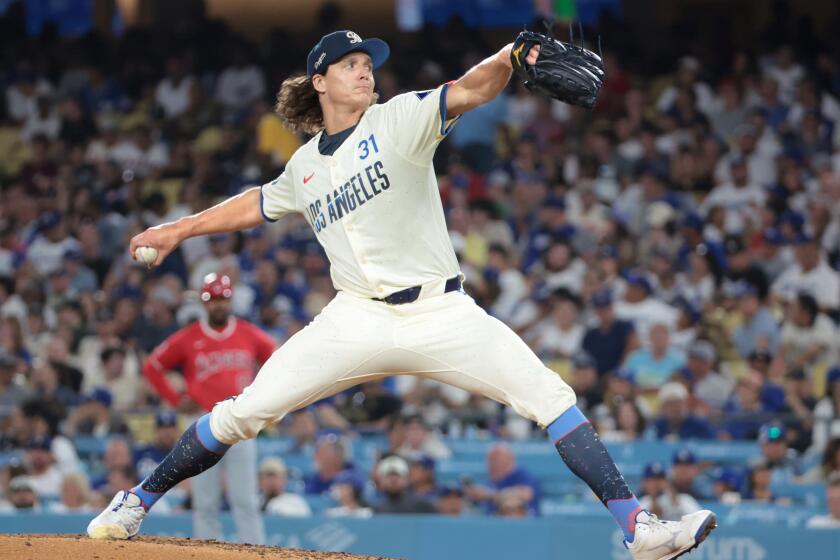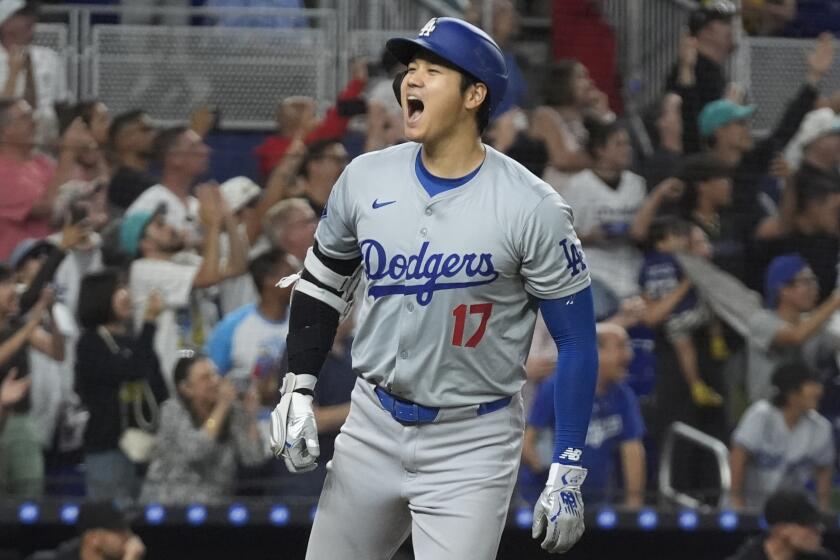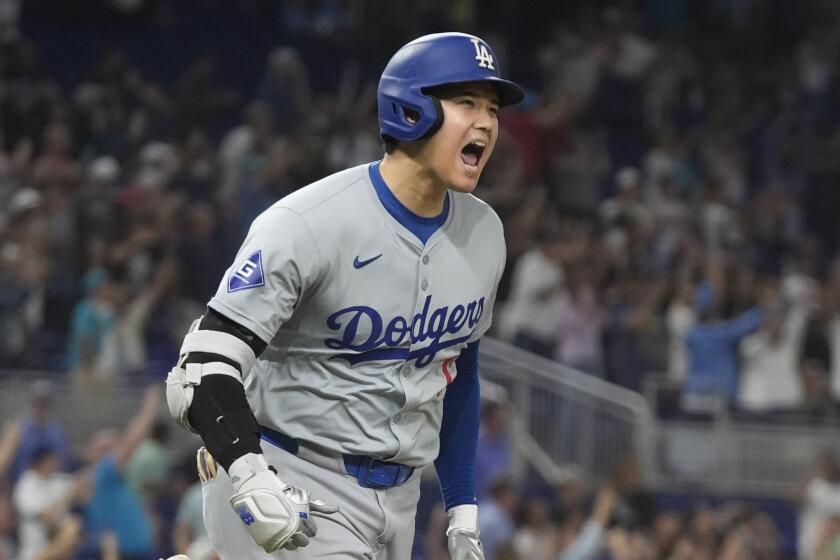Major league bullpens faltering under heavy load created by short starts
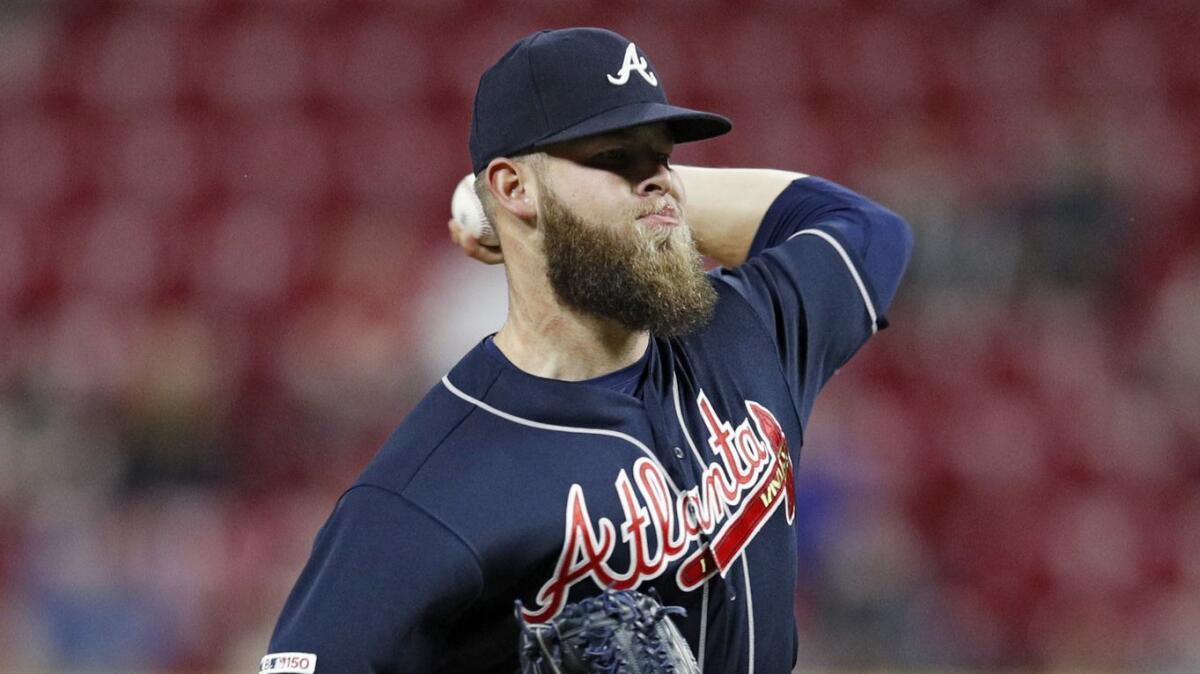
Atlanta Braves reliever A.J. Minter climbed atop the Dodger Stadium mound earlier this week as an avatar for baseball in 2019, but it unlikely he cared. He had enough problems. He lugged with him a 7.59 earned-run average and an over-reliance on his fastball. He posted 15 saves last season, but his spot in the majors looked tenuous. He faced an opposition that had scouted him and lacked interest in capitulating.
For Minter, the inning against the Dodgers was disastrous. He yielded two runs on two hits and two walks. He recorded one out. A day later, after another misstep in Arizona, his ERA bloated to 9.82. Minter looked like a closer last season. Now he looks bound for either the injured list or triple-A.
The life of a reliever has always been volatile. But they’ve been especially vulnerable in the first six weeks of 2019. The era of complete games ended long ago. The concept of even the seven-inning start is a relic. As baseball drifts further and further from reliance on starting pitchers, the burden on bullpens has begun to dampen their performance. It is soon to call it a crisis, but relievers are on pace for their worst performance in two decades.
“There’s a lot of guys who are getting asked to be major league relievers who can’t execute pitches,” Dodgers manager Dave Roberts said. “When it gets hot, in big moments, they can’t execute. They can’t consistently make pitches. There are walks. They make mistakes over the big part of the plate, and they give up slugging. Most of these guys, for me, aren’t ready.”
The industrywide earned-run average for relief pitchers hovers around 4.35, on pace to be the highest mark since 2000. The trouble is not reflected among starting pitchers. The collective ERA for starters is 4.32, lower than 2017 and 2016.
An explanation for the increase involves a variety of factors, according to interviews with players and coaches. The simplest involves the workload. If relievers pitch more, they will be exposed to more opportunities to permit runs. But more nuanced reasons reveal the recent evolution of the sport.
No longer do hitters fear fastball velocity — and the gap between the fastball of a starter and a reliever has shrunk. Hitters utilize video and analytics to calibrate their strengths at the plate, the weaknesses of their opponents, and where the two converge. As teams slash salary, they often are willing to rely upon younger, cheaper pitchers, who arrive underdeveloped and untested in high-leverage situations.
“When you’re using some of the youth, I believe that they feel like they have to do more than what they really need to do,” Atlanta Braves pitching coach Rick Kranitz said. “And they overthrow, and try to get more velocity than they need to, and do more than what they’re capable of doing.”
Relievers by nature are flawed. Somewhere in the developmental pipeline, an executive determined that a particular pitcher should not be a starter.
The reasons are multifold: a susceptibility to injury, a lack of a third pitch, an inability to maintain velocity, a struggle holding runners. But teams developed methods for squeezing value out of these misfits. They manipulated rosters to circulate fresh arms from the minors. They trained prospects to increase their velocity, so they could throw smoke upon arrival.
The strategy worked, to a point. By 2014, bullpen ERA had dipped to 3.58, lower than it had been since 1992. Relievers struck out nearly a batter per inning. The Kansas City Royals rode an electric bullpen to consecutive appearances in the World Series in 2014 and 2015, while big-market teams like the New York Yankees appropriated portions of that strategy.
Yet the opposition caught up. As a member of the San Diego Padres developmental staff earlier this decade, Dodgers bullpen coach Mark Prior marveled at the time hitters devoted to taming the fastball. “It was velocity training, just day in and day out,” Prior said. The schooling soon reached the majors.
“It’s human nature to adapt,” Dodgers infielder David Freese said. “I think, as hitters, you adapt to the velo that’s coming out of the bullpen. Obviously, it’s extremely hard. But you just evolve.”
The adjustments coincided with technological upgrades that removed a pitcher’s margin for error. The composition of the baseballs has been a subject of irritation among pitchers for several years; many believe they are juiced. What is undeniable is the amount of study that hitters put into their approach. They know what pitchers throw and where they like to throw it. There are no secrets.
Pitchers possess the same amount of data. But they still must be precise. As hitters gear up to launch baseballs toward the fences, mistakes are costlier than ever, coaches say.
“If you don’t execute,” Kranitz said, “in today’s age, against guys who are looking to do some serious damage, you’re going to give up some long balls.”
As hitters changed to confront relievers, so did the other pitchers.

In 2019, the average fastball from a reliever averages 93.3 mph, only a slight increase from the 92.6 mph of starters. More problematic for bullpens, though, is the proliferation of starters with elevated velocity. In 2009, there were zero starters with an average fastball above 96.1 mph, and only eight with a 94-mph fastball or better. In 2019, there are six starters with an average heater above 96.5 mph and 24 who can hit 94 mph. What was once elite is now routine.
“For the most part, when a reliever came in, he would overpower hitters,” Mets pitching coach Dave Eiland said. “But now hitters see power all the time. So velocity isn’t as effective.”
Yet relievers often get to the majors because they dominate with their fastball in the minors. The Dodgers have witnessed this phenomenon. Prior mentioned reliever J.T. Chargois, who has been unable to stick in the big leagues because of a lack of secondary weapons.
“His fastball velocity, his movement, it’s electric in the minor leagues,” Prior said. “When he gets up here, the problem is, one, they study, two, they have all the information. And they just wait him out.”
As a counter, Prior pointed to the progress of reliever Pedro Baez’s changeup. In 2017, Baez leaned on his 97-mph fastball 72.7% of the time, using the changeup at a 10.6% clip. The organization identified the changeup as an underused weapon that could disarm left-handed hitters. The coaches encouraged Baez to use the pitch in less predictable counts. They pointed out opposing hitters who might be susceptible to it.
Sign up for our daily sports newsletter »
Baez’s fastball velocity has declined to 95 mph this season, and its usage has decreased to 47%. The changeup usage had risen to 37%, and Baez has become one of the team’s few reliable relievers.
“It’s almost to the point where he’s more comfortable throwing that pitch,” Prior said. “That’s a really hard thing, as a hitter, to protect against 96-mph, and now he’s dropping his changeup in there whenever he wants.”
For Minter, all is not lost. He’s only 25. His future remains promising. His fastball might still be elite. But for now, as this season churns through its first quarter, he looks like an exemplar of an industrywide dilemma.
“We’re only a month into the season, it could stabilize a little bit,” Eiland said. “But I just think hitters aren’t affected by velocity anymore. And bullpens are getting overworked.”
Twitter: @McCulloughTimes
More to Read
Are you a true-blue fan?
Get our Dodgers Dugout newsletter for insights, news and much more.
You may occasionally receive promotional content from the Los Angeles Times.
